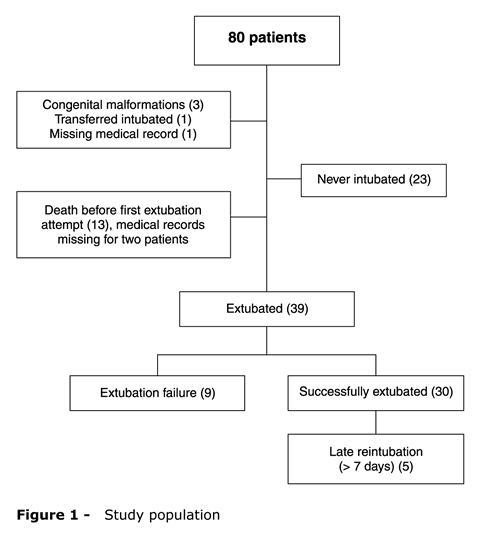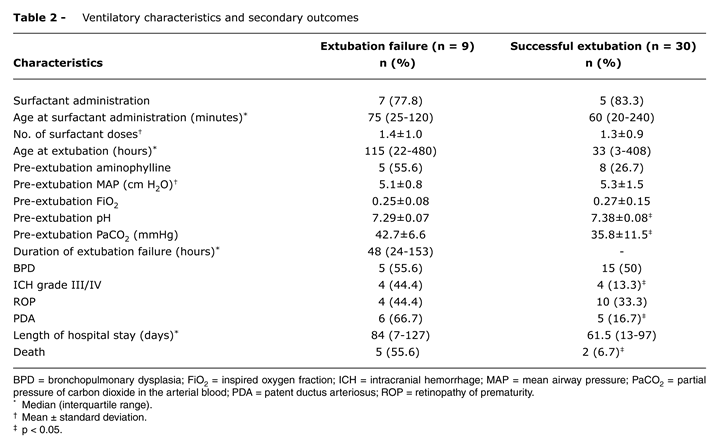OBJECTIVES: To determine the incidence of extubation failure in preterm newborns with birth weight < 1,250 g extubated to nasal continuous positive airway pressure and to identify the main risk factors associated with the need for reintubation in this population. METHODS: A retrospective review of eligible infants admitted and mechanically ventilated between July 2002 and June 2004 was performed. Extubation failure was defined as the need for reintubation within 7 days after the first extubation attempt. RESULTS: Of the 52 patients included in the study, 13 died before the first extubation attempt. Of the remaining 39 patients, only nine failed extubation (23.1%) Comparing the two groups (failure vs. successful), there was a statistically significant difference regarding birth weight, gestational age and 5-minute Apgar score. After logistic regression, only gestational age was significant. Other secondary outcomes showed significant difference between the groups: intracranial hemorrhage grade III and/or IV, patent ductus arteriosus and death. CONCLUSIONS: The incidence of extubation failure in our population was similar to the rate reported in the literature. The main risk factor for extubation failure was prematurity (≤ 28 weeks). In this population of extreme preterm infants, implementation of strategies for early extubation, use of methylxanthines, prevention of patent ductus arteriosus, and use of different modes of assisted ventilation after extubation may improve the outcomes.
Prematurity; mechanical ventilation; extubation failure; bronchopulmonary dysplasia




